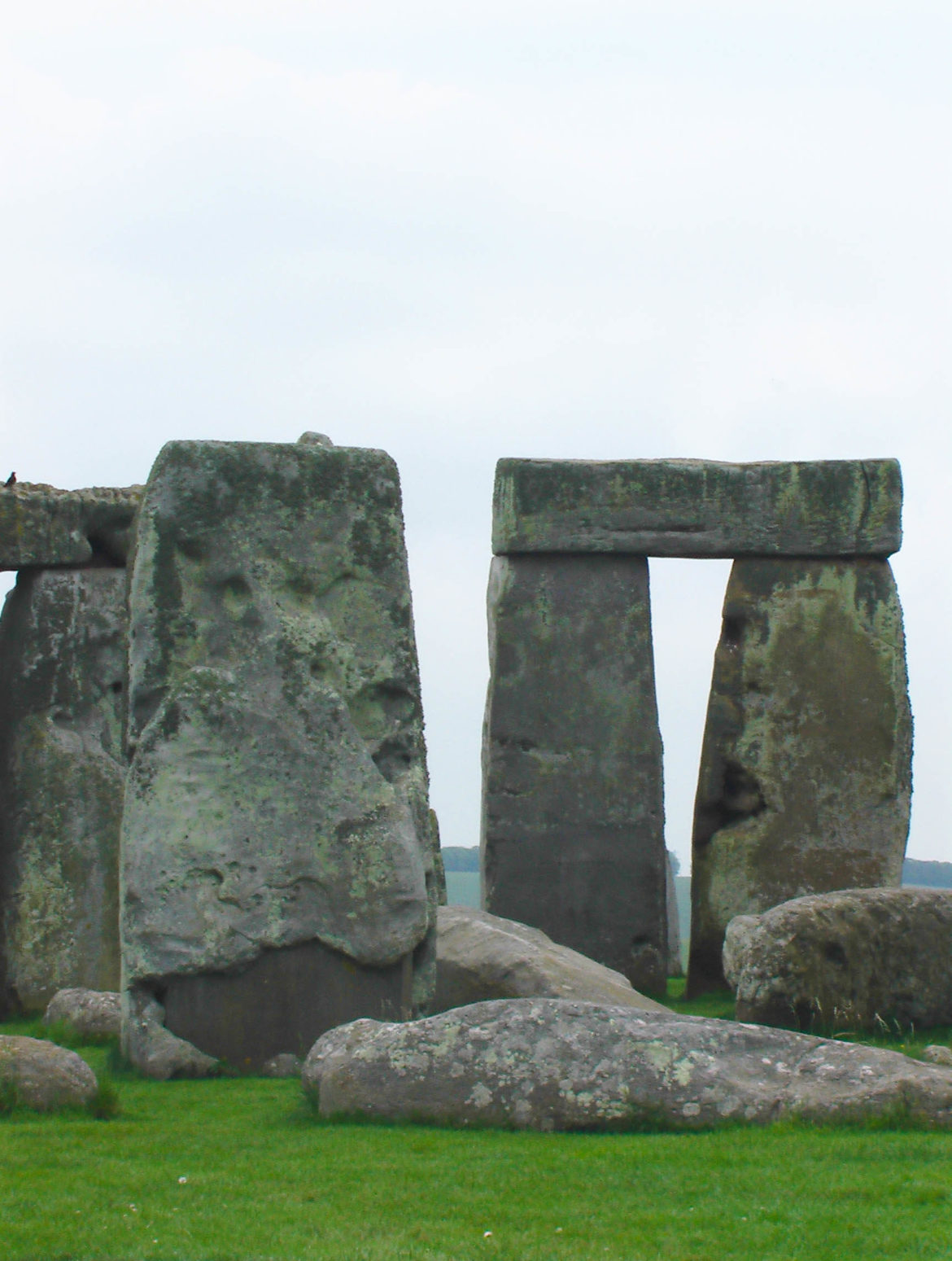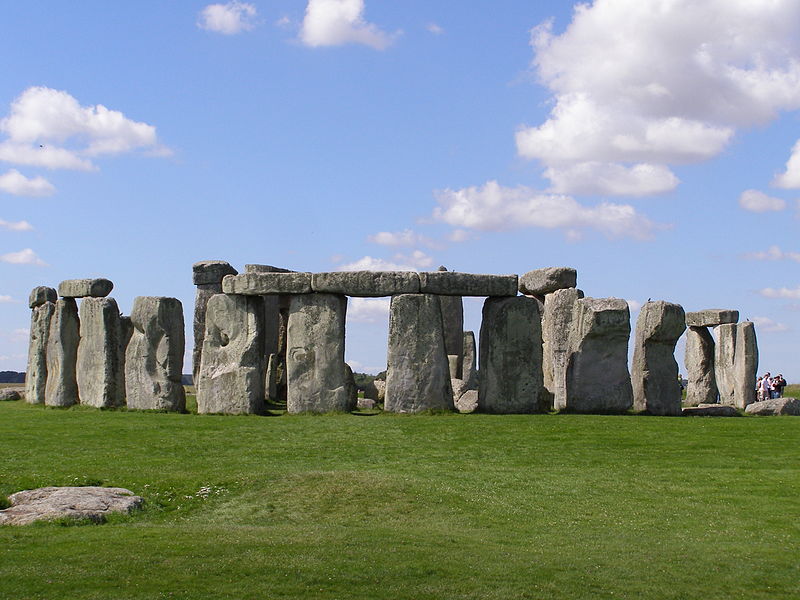SALISBURY – England – The Pagan community of the UK was intrigued this week, in a rather timely way around the Summer Solstice, to read of discoveries of a series of shafts near Stonehenge, situated 1.9 miles (3 km) north-east of the henge itself on Salisbury Plain at the Durrington Walls site. These shafts were aligned to form a circle 1.2 miles in diameter, which acts as a boundary to a sacred area linked to the henge itself. The shaft system has been described by archaeologists as the largest prehistoric structure ever found in Britain and a ‘masterpiece of engineering.’ They say that it illustrates the complexity and size of the Stonehenge site, which continues to give up its secrets as archaeological techniques and technology further advance.
The shafts indicate that the early people who constructed them had a reliable method of counting, indicated by the precision with which the shafts are placed.
Around 20 shafts have been found but it is likely that there are more (some are inaccessible due to more modern development). Each of the shafts is more than 5 metres ( ~16 feet) deep and 10 metres (~33 feet) in diameter.

Stonehenge
The shafts were previously dismissed as dewponds and natural sinkholes but their true nature has been revealed by new technology. The shafts showed up as geophysical anomalies, via geophysical prospection, ground-penetrating radar, and magnetometry. It seems, from the way that the shafts have silted up, that they were cut and then left open.
Radiocarbon dating has pinned the site to more than 4,500 years ago, so it is contemporary with both Stonehenge and Durrington Walls. The sheer amount of work that it would have taken to dig these shafts – with tools of wood, bone and antler – is staggering, but so, of course, was the construction of Stonehenge itself. The shafts also seem related to the Larkhill causewayed enclosure, which was constructed more than 1,500 years before the Durrington henge itself.
Archaeologist Vincent Gaffney is based at the University of Bradford and is the co-principal investigator of the Stonehenge Hidden Landscape project. The universities of Birmingham and St Andrews are also involved in the investigation of this site, along with an international collaboration with the Ludwig Boltzmann Institute for Archaeological Prospection and Virtual Archaeology at the University of Vienna. Gradually, the project is unpacking the features found across Salisbury Plain and revealing more and more about this ancient landscape. It is, says Professor Gaffney, ‘a pattern on a massive scale.’
According to Professor Gaffney:
“This is an unprecedented find of major significance within the UK. Key researchers on Stonehenge and its landscape have been taken aback by the scale of the structure and the fact that it hadn’t been discovered until now so close to Stonehenge…The size of the shafts and circuit surrounding Durrington Walls is currently unique. It demonstrates the significance of Durrington Walls Henge, the complexity of the monumental structures within the Stonehenge landscape, and the capacity and desire of Neolithic communities to record their cosmological belief systems in ways, and at a scale, that we had never previously anticipated.”
The Professor of British later prehistory at University College London, Mike Parker Pearson, said: “Vince and his team have identified various other shafts that may be part of other formations further over to the west, even nearer Stonehenge. We just don’t know how many other big pits like that there are in the Stonehenge environs.”
But Parker Pearson has also asked that, as a result, the brakes should now be put on the proposed Stonehenge A303 road scheme, ongoing developments in which have been reported in The Wild Hunt over the last 2 years.
“This is just another reason to give up this disastrous white elephant of a scheme,” he says.

Stonehenge [Photo Credit: garethwiscombe/Flickr
The Stonehenge Alliance, who have been campaigning against the tunnel, also commented. Honorary and Secretary Kate Fielden says:
“The astonishing finds we have learned about [this week] serve to underline not only how much there is still to learn about the Stonehenge landscape, but also how much as yet unknown information about our distant past we could lose should the A303 Stonehenge tunnel and expressway go ahead.”
However, the Highways England project director for the A303 road scheme, Derek Parody, says:
“The latest finds are in the north-east of the world heritage site, well outside the scheme boundary and at its closest point half a kilometre north of the planned A303 upgrade. In our meticulous planning for the proposed route, we have used ground-penetrating radar as part of our geophysical survey strategy, to Historic England-required standards, and we have also supplemented this with a wealth of trial trenching and test pits to further evidence our results.”
The Wild Hunt will keep you posted on the progress of the road scheme.
Professor Gaffney says that the new discovery is indicative of a:
“…huge cosmological statement and the need to inscribe it into the earth itself…Stonehenge has a clear link to the seasons and the passage of time, through the summer solstice. But with the Durrington Shafts, it’s not the passing of time, but the bounding by a circle of shafts which has cosmological significance.”
Dr Nick Snashall, National Trust archaeologist for the Stonehenge World Heritage Site, agrees, commenting that
“As the place where the builders of Stonehenge lived and feasted, Durrington Walls is key to unlocking the story of the wider Stonehenge landscape, and this astonishing discovery offers us new insights into the lives and beliefs of our Neolithic ancestors. The Hidden Landscapes team have combined cutting-edge, archaeological fieldwork with good old-fashioned detective work to reveal this extraordinary discovery and write a whole new chapter in the story of the Stonehenge landscape.”
We do not know what the structure was for, although there have been suggestions that Stonehenge may have been devoted to the dead, whereas the largely wooden Durrington Walls site was devoted to the living. But this is speculation.
The Wild Hunt spoke to Professor Ronald Hutton of the University of Bristol, who says:
“Since this century began, both excavation and electronic surveys have completely altered our view of the Stonehenge landscape, by showing how much richer it was in Neolithic activity, and in vanished or almost vanished monuments, than we had thought. The new discovery of the huge pit circle fits this pattern. At the same time, none of this brings us any closer to getting into the minds of the people who laid out that landscape, and so we still know nothing of their political and social structures, gender relations or – above all – religious beliefs. We have to imagine those for ourselves: but that is a great boon to poets, artists and novelists.”
What British Pagans and others can anticipate is that the huge landscape of Salisbury Plain will continue to reveal further details about the ancient ancestors who built these structures.
The Wild Hunt is not responsible for links to external content.
To join a conversation on this post:
Visit our The Wild Hunt subreddit! Point your favorite browser to https://www.reddit.com/r/The_Wild_Hunt_News/, then click “JOIN”. Make sure to click the bell, too, to be notified of new articles posted to our subreddit.
